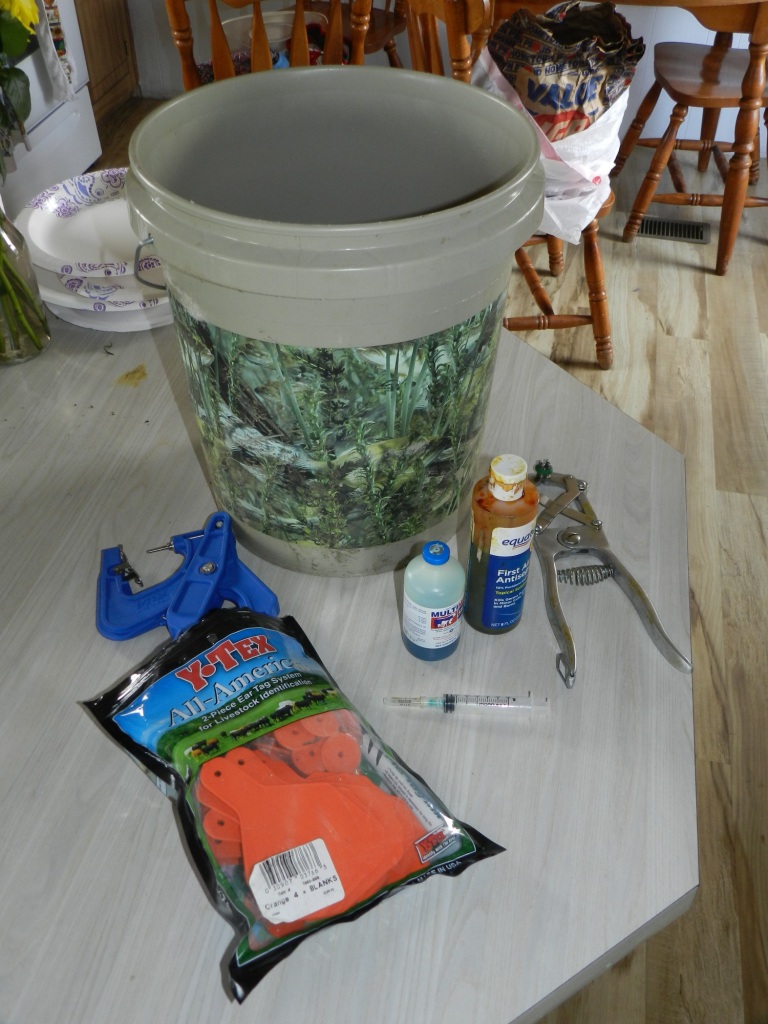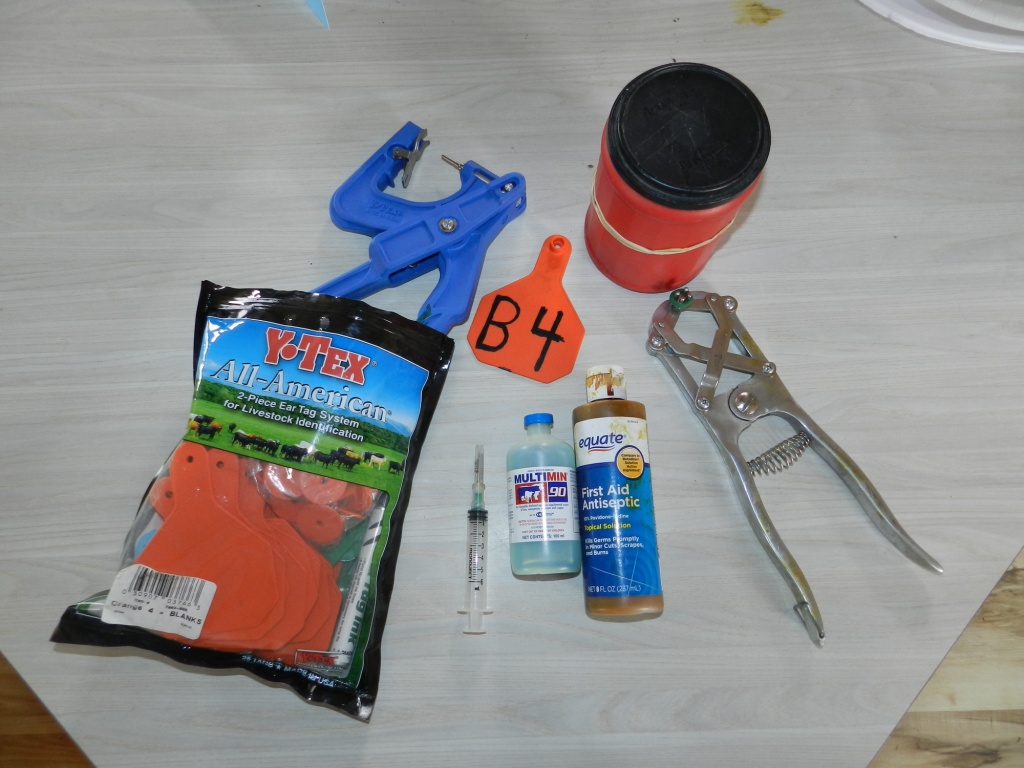In any profession, having the right tools is critical to getting the job done, and the livestock business is no different. During calving season on a cow-calf operation, the tools of the trade are commonly gathered into what’s referred to as a ‘calving bucket’.
Each operation is unique and requires different treatment of calves at birth. Some farmers and ranchers pay little attention to the calving process and let the cows and calves tough it out on their own. Others keep close tabs on every aspect of the birthing process and run the calf through a whole series of procedures shortly after birth. Most folks are somewhere in between.
So let’s take a look at a typical (our) calving bucket used on a small operation in Maine. If you’re a beginner, this might help you know what to prepare for during calving season.
What’s in our calving bucket?
1. Tag gun and tags – We place individually numbered ear tags in each calf born. Bulls and heifers get different colored tags so they can be sorted easily when the time comes. Our numbering system uses a standard letter for birth year and unique number for each calf. There are many different tag numbering systems you can use. The important thing is that each animal is identified and can be tracked.
2. Iodine – The calf’s navel should be dipped in, or squirted with iodine to prevent infection that can cause serious health problems including death.
3. Bander and bands – We’ve made the decision to castrate our bull calves at birth whenever possible. Traditional thinking has been that intact bulls perform better, so many ranchers wait to castrate bulls when they are older, say 3-6 months of age, or at weaning. Current advice from veterinarians suggests that any gains that might be realized using this method are probably minimized by the added stress and associated weight loss and health issues that later castration puts on the calves. I just figure it’s easier on both parties to get it done when they’re born. UPDATE: Please see our newest post, where we discuss our experiment with delayed calf processing and castration/banding!
4. Multimin, syringe and needles – We’re currently giving a shot of multi-min to the calves at birth. Other cattlemen in our area have success using Mu-Se or Bo-Se. These are vitamin/mineral injections that help overcome any deficiency the calf may have that will keep them from realizing their full potential and being happy and healthy critters. Some producers give vaccinations at birth, but if a calf gets adequate colostrum from mom (who should be up to date on her vaccinations), they receive the antibodies they need to stay healthy.
5. Notebook – We get records down on paper and later enter them into CattleMax online.
6. Weighing system – We have a hanging scale and a makeshift cradle that hooks onto a birch pole to weigh the calves. We also have a calf tape, which uses hoof diameter to estimate weight. We’re still working out the kinks of weight estimates, but do believe that collecting birth weight is an important aspect of herd management.
What else is in our bucket? Not much else at the moment, but that’s sure to change as we continue to grow and learn. The important part is thinking about having a kit ready for when calves hit the ground. Proper management early on can make or break an operation’s bottom line. What’s in your calving bucket?


Leave a Reply